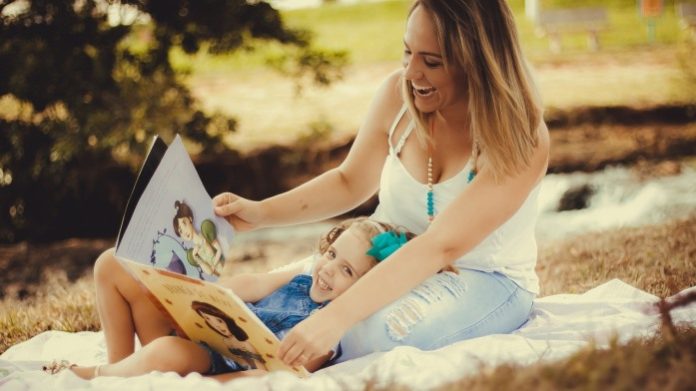When it comes to choosing a bedtime story for your kids, you might want to choose Dora the Explorer over the Berenstain Bears.
A new study from the Ontario Institute for Studies in Education (OISE) at the University of Toronto says that children learn better from books with human, not animal, characters.
(Non) Animal instincts
Books or TV shows are useful tools in the parenting world, not only to keep the kids distracted so you can get some peace and quiet, but also to teach valuable lessons like sharing, telling the truth, or helping others.
Choosing a book with a cute animal as the main character may seem like a great idea – if it’s an animal that your child likes, you might expect it will have a greater influence on their behaviour. But in a controlled study, this turned out not to be the case.
Patricia Ganea, Associate Professor of early cognitive development at OISE, led a study looking at sharing behaviour in kids aged four to six. The kids were allowed to choose ten stickers from a pool of 100. They were then told that another child was not able to come and so wouldn’t get any stickers. The children were given the option to donate some of their stickers to the other child.
After this experiment, the children read a book about sharing with either a human main character or a human-like animal main character and then given more stickers with the same option of sharing.
Results showed that kids shared more of their stickers after reading the book with the human main character. Reading a completely unrelated book about seeds did nothing to influence sharing behavior.
Reading into it
Ganea thinks this is because young children can’t draw the necessary parallels between non-human characters and themselves, even though the animal characters walked on two feet and wore clothes like humans.
This highlights how important parental guidance is to help children understand what they are reading or seeing. By asking your child to explain what the story is about and how it relates to their own lives, you can potentially overcome the non-human obstacle in the story.
Another surprising thing about this study is the speed with which behaviour changed. You might think that a concept like sharing takes time to develop, but these kids changed their sharing behaviour almost immediately after reading the book.
Children learn moral behaviour from the world around them. By better understanding the things that influence them the most, we can improve our teaching practices.








































